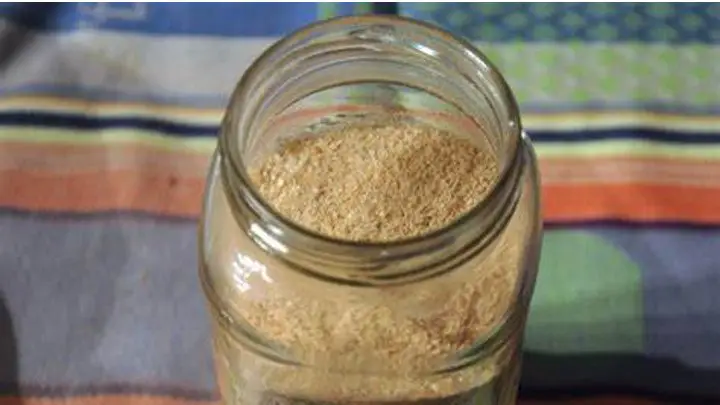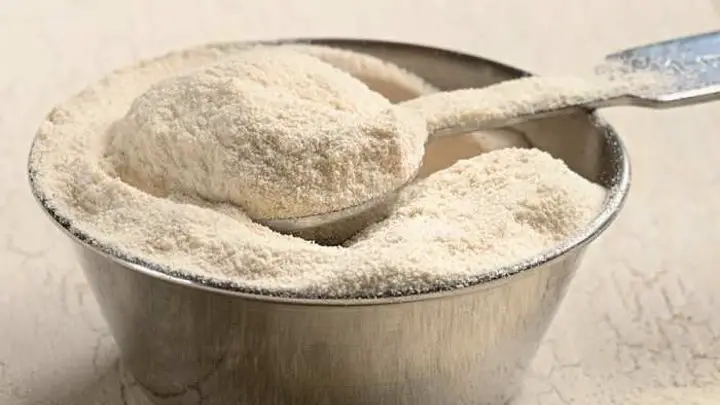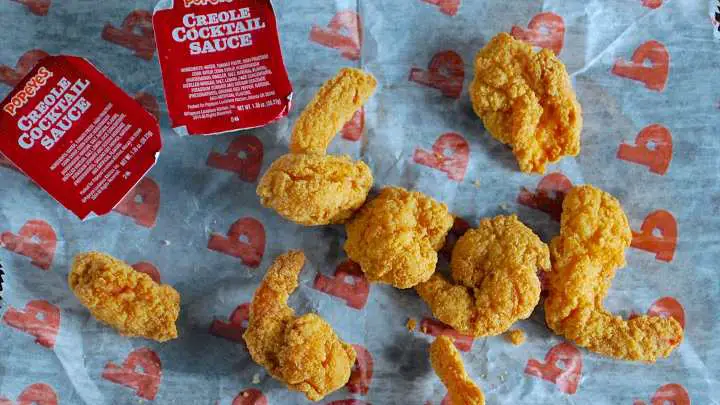You most likely consumed a malt beverage or candy when you were younger. Back then, and even today, kids still consider the flavor to be their favorite. So, in a comparison between diastatic vs non-diastatic malt powder, can you tell one from the other?
Malt powder definitely takes you down memory lane. But now, you are not just thinking back; you are also asking a frequently asked question, is there a difference between diastatic and non-diastatic malt powder?
Diastatic and non-diastatic are the two types of malt powder. Malt powder is a powder made from wheat flour and barley and used in the preparation of baked goods such as bagels and malted milk balls.
As a result, it is critical that you fully understand how each powder functions if you want to keep making the best pastries possible.
Read to find out what diastatic and non-diastatic malt powders are and how they differ.
SEE: Is Baking Cocoa The Same As Cocoa Powder?
What is diastatic malt powder?
Diastatic malt powder is a wheat or barley powder containing an enzyme that is still natural and active.
This enzyme gives yeast a boost by breaking down flour starch into sugars that the yeast can consume, causing baked goods to rise more quickly.
Additionally, the diastatic powder helps your pastries taste sweeter and darkens their color.
What is non-diastatic malt powder?
Non-diastatic malt powder is derived from the same plant that produces diastatic malt powder.
Non-diastatic malt is also used in yeast-leavened bakery goods, but it does not break down starch as well as diastatic malt.
SEE: How To Tell If Baking Powder Is Aluminum Free
Do diastatic and non-diastatic malt powders work the same?
No, they do not work the same. The diastatic powder performs all of the functions of non-diastatic powder, such as flavoring, sweetening, and browning, while also containing an active property that causes the pastry to rise quickly, which non-diastatic malt powder lacks.
The non-diastatic malt powder is slower to activate and is used to give pastry a little rise and added sweetness.
What’s the difference between diastatic and non-diastatic malt powders?

Despite being derived from the same plant and performing similarly in baking, diastatic and non-diastatic malt powder differ slightly.
Diastatic malt powder is prevalently used with all-purpose and bread flours (such as King Arthur flour) to improve the rise, color, and flavor of baked goods.
Meanwhile, non-diastatic malt powder is primarily used as a flavoring agent in yeast-leavened pastries in place of sugar because it cannot break down starch, making food rise more slowly.
SEE: Here’s How You Can Tell If Baking Powder Is Acid or Base
Can you substitute diastatic and non-diastatic powders for each other?
No, you cannot. Because only diastatic malt powder contains a baking rising agent, you cannot substitute non-diastatic malt powder with it in a recipe.
Furthermore, in many recipes, substituting diastatic malt powder for non-diastatic malt powder may result in a gummy texture.
Which is better diastatic or non-diastatic malt powder?
While non-diastatic malt powder will increase the sweet taste and color of your pastries, diastatic malt powder will do the same, plus make your dough rise faster. As a result, diastatic malt powder is advantageous to non-diastatic malt powder.
SEE: Is Cornstarch Baking Powder?
What can you substitute for malt powder?
If you are stranded and lacking both diastatic and non-diastatic malt powder. These alternatives can fill their roles effectively.
Barley malt syrup
Since malt syrups are frequently non-diastatic, you can use a small amount of this component in place of malt powder.
If you have this syrup on hand, it’s one of the best options to use because it has the flavor of malt powder the closest you will ever get without actually using malt powder. Use malt syrup in a ratio of 1:3 because the syrup has a sweeter taste than the powder.
Corn syrup
When used as a flavoring ingredient, corn syrup is a good substitute for malt powder because it is often added to sweeten meals. It mixes well with a variety of ingredients and makes a great binding agent in recipes.
However, it’s not the healthiest of products, and its sweetness can easily become overwhelming. Use the right quantity when substituting malt powder based on your recipe requirements.
Molasses
The sweet flavor and extraordinarily thick consistency of molasses are well known. Due to its flavor, it is an excellent diastatic substitute for malt powder.
However, you should use it cautiously because it contains a lot of sugar and is a heavy ingredient. Just a small amount is usually enough.
Malted milk powder
Malted milk powder provides malt flavor in recipes because it contains non-diastatic malt powder. If you’re making a recipe that calls for malt flavor alone, malted milk powder is a great alternative. However, stick to a 1:1 ratio.
Coconut milk powder
This substitute for dry malt powder works well in baking, beverages, and seasoning.
While malt powder and coconut milk powder have slightly different flavor profiles, they can still be substituted. You can use coconut milk powder in the same proportion as malt powder.
Ovaltine
One of the best non-diastatic alternatives to malt powder is Ovaltine, a chocolate-flavored malted milk powder. It is an excellent replacement because it has a distinct malt flavor and aroma.
Maca powder
Maca powder is identical to malt powder in every way. It’s a great replacement because it’s comparable in taste, texture, and even color. In addition, it contains a wealth of essential vitamins. Use the substitute at a 1:1 ratio.
SEE: Can You Use Cornstarch Instead of Baking Powder?
Corn starch
You can use it to replace the malt powder you’re missing. Although it lacks the sweetness of malt powder, it still works wonders for fluffy pastries and thick, creamy sauces. To replace malt powder, combine corn starch and sugar.
Vanilla powder
The vanilla bean is the source of vanilla powder. The bean is ground into a fine powder after being dehydrated and can be used in place of malt powder. It has a mild, pleasing aroma and a sweet-tasting, smooth flavor.
Potato flour
Potato flour is a great substitute for malt powder because it is frequently used to give recipes thickness and fluff.
Soymilk powder
Soymilk powder is your go-to option if you’re looking for a healthy and allergy-friendly alternative to malt powder.
If malt powder isn’t available, soymilk powder offers a lighter, just-sweet-enough flavor that gives your recipes a lovely finishing touch. It is also a healthier option because it contains less sugar.
Rice malt syrup
Rice malt syrup’s light and brisk flavor make it a great substitute for malt powder because it tastes naturally delicious and has just the right amount of sweetness for a jolting start to each day.
SEE: Get A Chance To Win a $500 Gift Card At Giant Foods
Bread flour
Because bread flour already contains malt powder in its blend, it is a very convenient alternative to malt powder. When baking, always use the same quantity of malt powder; your recipe will come out delicious.
Note: If these alternatives are not at arm’s length, you can skip the malt powder from your recipe as it is never truly necessary.
FAQs
When should you use diastatic malt powder?
Malt powder can be used in baked goods such as bagels, crackers, pizza crust, and pretzels.
Diastatic promotes a high rise, a mild organic malt flavor, and attractive crust browning. It is beneficial to professional bakers because it promotes uniform and improved production of baked goods.
Is carnation malted milk diastatic?
No, it is not. Malted milk powder is not enzymatically active, unlike diastatic malt powder, so it has no impact on how yeasted doughs behave.
In this respect, malted milk powder is comparable to non-diastatic malt powder, a sugar-rich, inactive variety of barley malt extract.
SEE: Stand a Chance to Win a $500 Food Lion Gift Card
Can you skip diastatic malt powder in your recipe?
Yes, you can skip it. It’s not necessary, but a diastatic malt powder will aid in the dough’s rise.
Consequently, if you can’t find the ingredient or a suitable substitute, the recipe will probably still turn out fine without it, especially if it calls for sugar because yeast can feed on that.
Does diastatic malt powder add flavor?
Yes, it does. You can achieve a better flavor and color without using as much of your priceless yeast because diastatic malt adds the very same sweet flavor and shiny crust as non-diastatic malt.
Conclusion
The primary difference between diastatic and non-diastatic malt powder is the fact that the latter enables baked goods to rise faster.
When you use diastatic malt powder, you get all of the benefits of non-diastatic malt powder while still getting your bagel or pretzels to rise quickly.
Aside from that, the two work almost identically, with the exception that the non-diastatic focuses more on flavor and does not rise as quickly as the diastatic.
In the end, diastatic malt powder is your best bet. However, if you don’t have malt powder or its alternatives on standby, you can skip it entirely. Once you have got sugar in your recipe, this will work perfectly with the yeast once mixed.
Thanks for reading.
If you enjoyed reading this article, view Cheffist for more.






